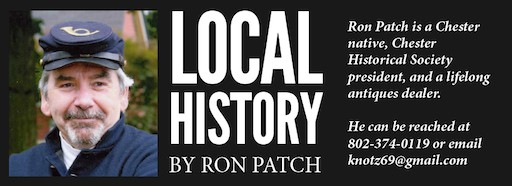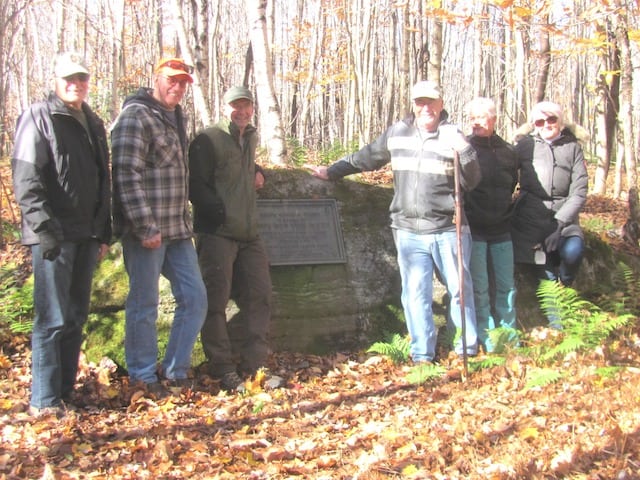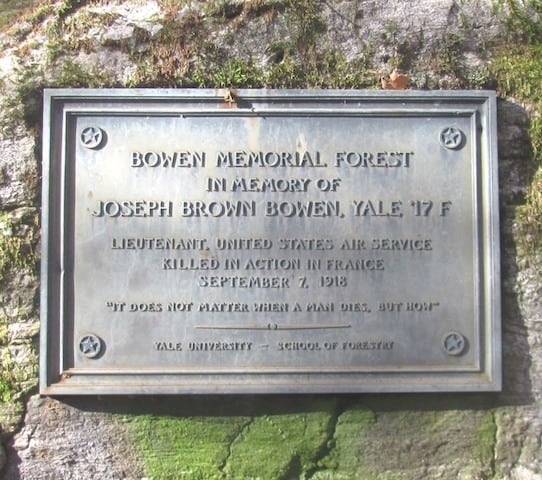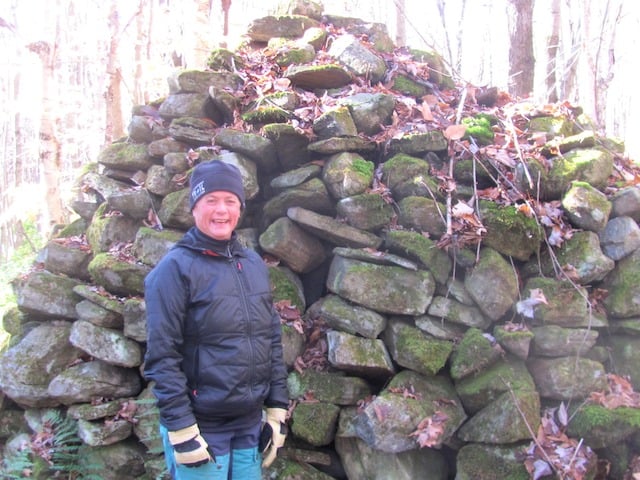
Recently, I wrote about Belmont Cider Days. In that article I mentioned my father spending summers in Belmont when he was a boy with his grandfather, traveling the area together hunting and fishing.
I also mentioned Dad taking me to some of these same locations. One place I remember as a boy is the Yale Forest.
This past Friday, Oct. 29, Dennis Devereux led a hike into Yale Forest. There were seven of us who hiked in, including me. What a morning it was.

The sky was a beautiful blue, cloudless, with a fall chill in the air. I had a good frost that morning. As Dennis led the hike, he explained the history of Yale Forest.
Lt. Joseph Brown Bowen
Joseph Bowen was from Rhode Island. He was Yale Class of 1915, and Yale Forestry School 1917. An aviator in World War I, Bowen was shot down and killed Sept. 7, 1918 by a German pilot.
From the June 2021 Mount Holly Chit Chat:
“Bowen flew alone on a voluntary patrol along the Allied side of the lines just west of Cambrai, France. He encountered a German Fokker scout and in the ensuing dogfight he was shot down just weeks before the war ended. Lt. Bowen was buried where his English comrades laid him, near the little village of Pronville, France.
“Above his grave, his squadron placed a cross, inscribed in his memory, made from the broken propeller of his plane.”

The Yale Forest
In 1912 the Bowen family purchased 462 acres in Mount Holly. Perhaps they bought the property for Joseph Bowen to practice his forestry skills. After Lt. Bowen was killed, his parents donated the Mount Holly property to Yale University. A bronze plaque was installed on a rock outcropping.
The plaque
Bowen Memorial Forest
In memory of Joseph Brown Bowen, Yale ’17 F
Lieutenant, United States Air Service
Killed in action in France September 7, 1918
Yale University School of Forestry
As I stood before the plaque, I thought of the day Dad and I stood here, each with a rifle slung over our shoulder.
This is how and why this area is known as the Yale Forest today. The plaque is a fitting tribute to this early aviator and forester. Yale still owns and manages the property. It is not posted.
It’s almost 60 years since my father took me here. I had not been back since. Our group hiked the old county road, now Hedgehog Hill Road. None of the landscape looked as I remembered it. In the years since I was there, it has been logged off. This logging changed the landscape.
We were walking along when all of a sudden I recognized the terrain: “Dennis, this is starting to look familiar.”
It was the site of the old Ray place, just a cellar hole today, as it was when I was a boy. I described how this site looked years ago. I recounted the day my father and I were bear hunting here. Two or more bear came in that evening to feast on apples from what seemed ancient apple trees. At that time the entire area was overgrown with hardhack.

Because of the hardhack, it was impossible to see a bear if he didn’t stand to reach for apples, but they never did. As darkness loomed, we could see the tops of the hardhack moving as the bear walked through it on all fours. They were very close. The hair on the back of my neck stood up. It was very exciting for a young boy but scary at the same time.
Dennis will be leading other hikes before deer season starts if you want to go. It’s an easy walk, and you’ll see some interesting landmarks. There’s the cellar hole where the Ray place once stood and a large and interesting rock pile, no doubt built by an early settler.
When you see it, you’ll ask yourself, “Why build such a rock pile?” It may be as simple as the owner of the property wanted travelers to take note of his place as they passed by with horse and wagon. Whatever the reason, it’s a beautiful thing.
In doing research, I found conflicting squadron numbers for Bowen. I’ll ask Tom Hildreth if he can get to the bottom of this. Tom is an aviation historian and has helped me in the past.
This week’s old saying is near the bottom of the Bowen plaque: “It does not matter when a man dies, but how.”